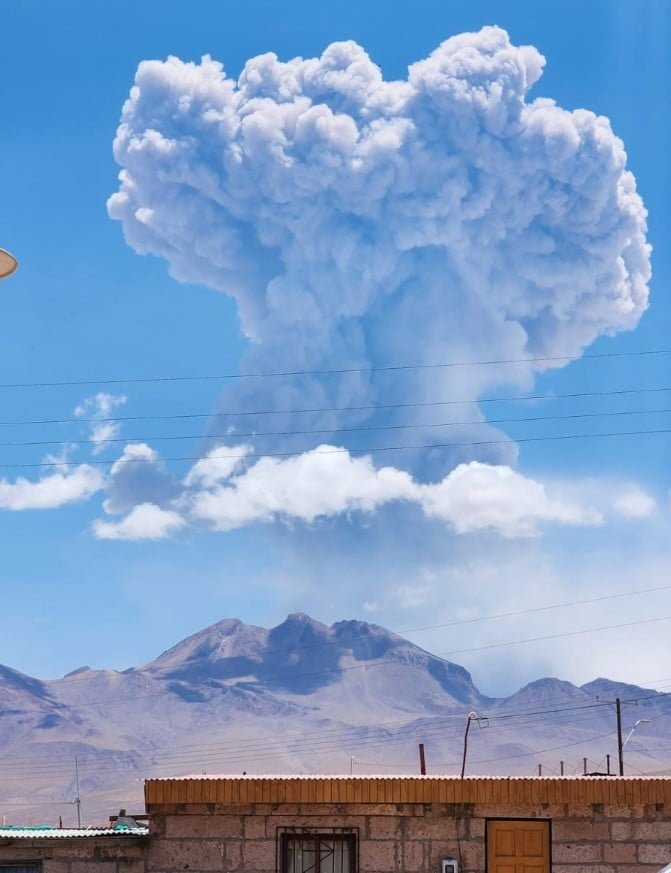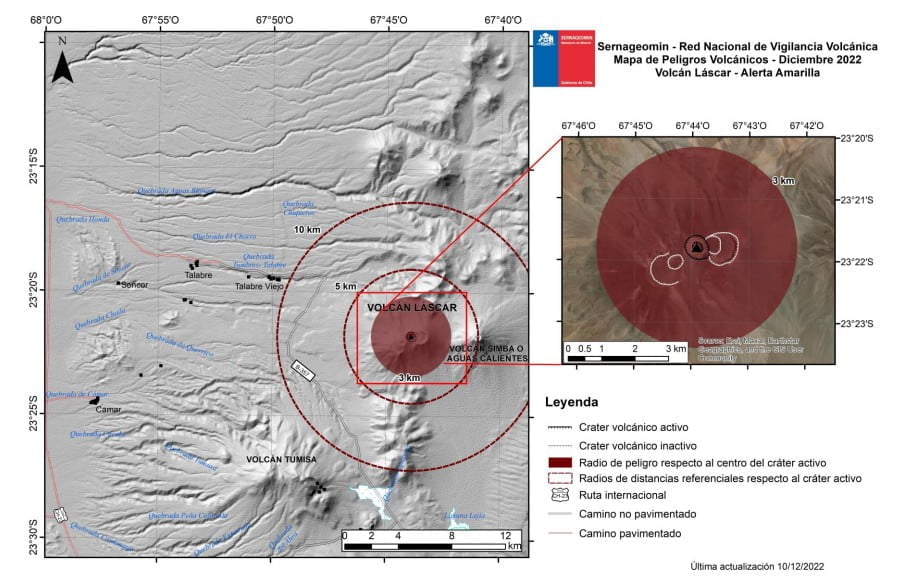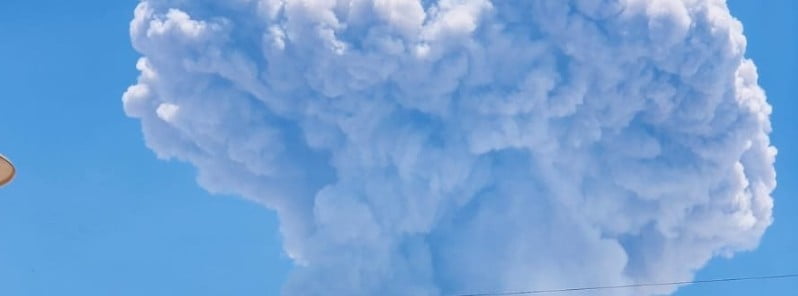A strong vulcanian explosion took place at Lascar volcano, Chile at 15:36 UTC on December 10, 2022.
- Lascar is a composite stratovolcano located in Chile’s Antofagasta region. It is the most active volcano in northern Chile, ranking No. 14 in the Volcanic Risk Ranking of Chile
- The last eruption at this volcano took place in 2017 (VEI 2)
- The largest historical eruption took place in 1993, producing pyroclastic flows to 8.5 km (5.3 miles) NW of the summit and ashfall in Buenos Aires
The Argentine Mining Geological Service (SEGEMAR) through its Argentine Volcano Surveillance Observatory (OAVV), in conjunction with the Chilean Southern Andes Volcano Observatory (OVDAS), reports the technical alert level of the Lascar Volcano was increased to Yellow on December 10, 2022.
The change in technical alert level is associated with the explosive event recorded at 12:36 local time (15:36 UTC), which was correlated with a long-term seismic event ( LP) associated with the fluid dynamics inside the volcano, whose energy reached 320 cm² and which generated an eruptive column that reached 6 000 m (20 000 feet) above the crater level — 11.5 km (38 000 feet) a.s.l., with a dispersion of ash in southwest direction.
The explosion generated pyroclastic flows that affected the sectors near the crater of the volcano. The recorded pyroclastic flows were short-range, toward the north and southeast flanks of the volcano.
It should be noted that according to the information provided by the Volcanic Ash Warning Center (VAAC) Buenos Aires, the volcanic ash plume headed toward Chilean territory.

Due to the characteristics of the registered event and considering the historical instrumental record for this volcano, it is not possible to rule out the occurrence of explosions similar to the one registered, considering a potential danger area of 3 km (1.8 miles) around the active crater of the volcano.
For this reason, following the information management protocols for volcanic emergencies existing between Chile and Argentina, and taking into account the historical history of the affectation of this volcano on Argentine territory, preventively, the Argentine Observatory for Volcanic Surveillance (OAVV ) of SEGEMAR increased the level of technical alert for this volcano in accordance with the provisions of the Volcanological Observatory of the Southern Andes (OVDAS) of SERNAGEOMIN of Chile.

The last eruptive episode at this volcano lasted from October 30, 2015 to April 2, 2017 (max VEI 2).
Geologic summary
Láscar is the most active volcano of the northern Chilean Andes. The andesitic-to-dacitic stratovolcano contains six overlapping summit craters. Prominent lava flows descend its NW flanks.
An older, higher stratovolcano 5 km (3.1 miles) E, Volcán Aguas Calientes, displays a well-developed summit crater and a probable Holocene lava flow near its summit (de Silva and Francis, 1991).
Láscar consists of two major edifices; activity began at the eastern volcano and then shifted to the western cone.
The largest eruption took place about 26 500 years ago, and following the eruption of the Tumbres scoria flow about 9 000 years ago, activity shifted back to the eastern edifice, where three overlapping craters were formed.
Frequent small-to-moderate explosive eruptions have been recorded since the mid-19th century, along with periodic larger eruptions that produced ashfall hundreds of kilometers away.
The largest historical eruption took place in 1993, producing pyroclastic flows to 8.5 km (5.3 miles) NW of the summit and ashfall in Buenos Aires.2
1 The technical alert level of the Lascar volcano in Chile is raised to yellow – SEGEMAR – December 11, 2022
2 Lascar – Geological summary – GVP




